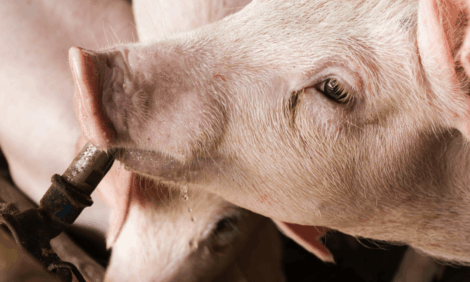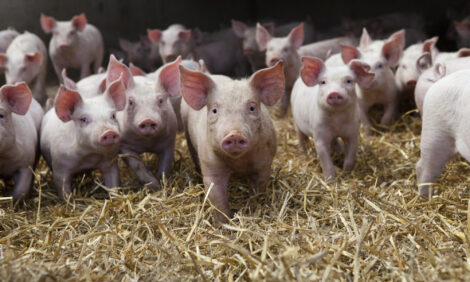



PRRS Virus May Pre-Dispose Pigs to PMWS
Pigs co-infected with porcine circovirus 2 (PCV2) and porcine reproductive and respiratory syndrome (PRRS) virus developed severe lesions and clinical symptoms, which indicates that PRRSV could be a predisposing factor to high mortality, according to new research from Shanghai, although the scientists were unable to explain the interaction.Jianzhong Yi and Chengqian Liu of the Institute of Animal Husbandry Veterinary Sciences at Shanghai Academy of Agricultural Sciences have published a paper on their work describing the molecular characterisation of PCV2 isolated from diseased pigs co-infected with PRRS virus. The paper is published in Virology Journal.
They explain that PCV2 is the causative agent of post-weaning multisystemic wasting syndrome (PMWS). Healthy pigs experimentally inoculated with PCV2 developed the typical microscopic lesions of PMWS but only mild clinical symptoms. The co-infection of PRRSV, PPV and PCV2 have been reported in recent years. Experimental studies on co-infection with PRRSV and PCV2 resulted in the microscopic lesions associated with PMWS and/or porcine dermatitis and nephropathy syndrome (PDNS) and the development of severe disease.
In June 2008, severe disease, known as 'high fever' occurred in several pig farms in Shanghai, leading to a 57 per cent mortality rate. The researchers simultaneously detected PRRSV and PCV2, PPV in the tissue samples from diseased pigs by PCR technology, PRRSV was detected, genome sequence blast showed the strain belongs to genotype 2, 99.4 per cent homologous to the PRRS virus strain JXA1 isolated in China, which has been proved to cause porcine high fever disease with high morbidity and mortality (Tian, et al., 2007). There was no PPV detected in all the samples but PCV2 was detected from in all the PRRS-infected samples.
The complete genome of PCV2 strains were sequenced, phylogenetic and polymorphic analyses were carried out. BLAST searches revealed the highest sequence identity (99.5 per cent nt and 99.3 per cent aa) to Guangxi strain EF675230.
Yi and Liu concluded that the phylogenetic tree showed that clustering of the isolates did not strongly correlate to clinical signs or geographical distribution. Polymorphic analyses demonstrated that the amino acids at most of the polymorphic sites in ORF1 and ORF2 belong to the same amino acid group according to chemical or structural properties, and revealed that highly polymorphic regions overlapped with the known immunoreactive epitopes of ORF2.
Reference
Yi J. and C. Liu. 2010. Molecular characterization of porcine circovirus 2 isolated from diseased pigs co-infected with porcine reproductive and respiratory syndrome virus. Virology Journal, 7:286. doi:10.1186/1743-422X-7-286.
Further Reading
| - | You can view the full report (as a provisional PDF) by clicking here. |
Further Reading
| - | Find out more information on the diseases mentioned in this article by clicking here. |
October 2010








